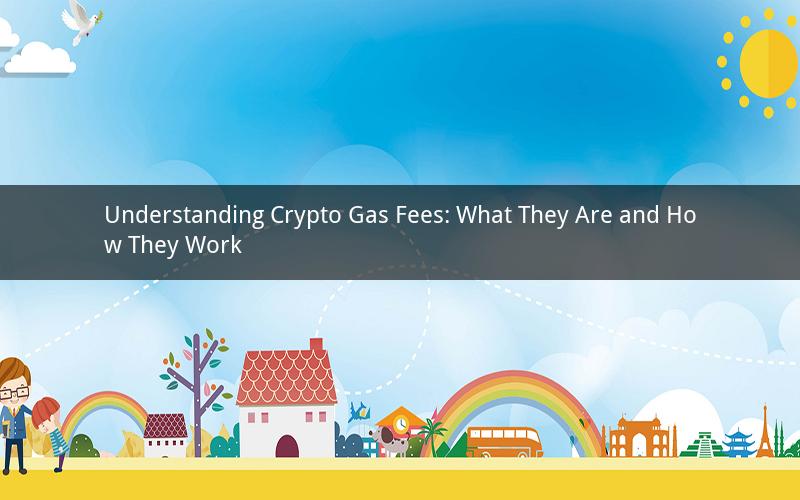
In the world of cryptocurrencies, gas fees have become an integral part of the blockchain ecosystem. Whether you are a beginner or an experienced investor, understanding what crypto gas fees are and how they work is crucial for navigating the cryptocurrency landscape. In this article, we will delve into the concept of crypto gas fees, their purpose, and how they impact your wallet.
What are Crypto Gas Fees?
Crypto gas fees refer to the transaction fees paid to miners or validators for processing and confirming transactions on a blockchain network. When you make a transaction, such as sending or receiving cryptocurrencies, you are essentially asking the network to process your request. In return, you pay a fee in the form of gas fees, which are usually denominated in the native cryptocurrency of the blockchain.
The Purpose of Crypto Gas Fees
The primary purpose of crypto gas fees is to incentivize miners or validators to process transactions on the blockchain. By charging a fee for each transaction, the blockchain network ensures that only the most important and urgent transactions are processed first. This prevents the network from becoming overloaded with unnecessary or low-priority transactions.
Additionally, gas fees help to maintain the decentralization of the blockchain network. Since miners or validators are responsible for processing transactions, they must compete with each other to earn fees. This competition ensures that no single entity has control over the network, preserving its decentralized nature.
How Crypto Gas Fees Work
The process of paying gas fees is relatively straightforward. When you initiate a transaction, you specify the amount of cryptocurrency you want to send and the gas fee you are willing to pay. The gas fee is determined by several factors, including the complexity of the transaction, the current demand for network resources, and the size of the transaction.
Once you submit your transaction, it is added to a queue of pending transactions. Miners or validators then select transactions to process based on the gas fee you are willing to pay. Transactions with higher gas fees are typically processed first, as they offer a greater incentive for miners or validators.
The Impact of Crypto Gas Fees
Crypto gas fees can have a significant impact on your wallet and overall experience with cryptocurrencies. Here are a few key points to consider:
1. Transaction Speed: The higher the gas fee, the faster your transaction will be processed. However, this can result in higher costs, especially during times of high network congestion.
2. Cost of Transactions: Gas fees can vary widely, depending on the blockchain network and the current demand for network resources. This can make it difficult to predict the total cost of a transaction.
3. Exchanges and Wallets: Some exchanges and wallets automatically calculate and pay gas fees on your behalf. However, it is important to understand how these fees are calculated and how they can impact your wallet.
4. Scalability: High gas fees can hinder the scalability of blockchain networks, as they make it more expensive to process transactions. This can lead to slower network speeds and increased congestion.
5. Alternatives: Some blockchain networks have implemented mechanisms to reduce gas fees, such as layer-2 scaling solutions. These solutions can help to lower transaction costs and improve network efficiency.
Frequently Asked Questions
1. What is the difference between gas fees and transaction fees?
Gas fees are the transaction fees paid to miners or validators for processing transactions on a blockchain network. Transaction fees, on the other hand, refer to the total cost of a transaction, including the gas fee and any additional charges.
2. Why are gas fees so high during times of high network congestion?
During times of high network congestion, there is a higher demand for network resources, which drives up gas fees. Miners or validators prioritize transactions with higher gas fees, as they offer a greater incentive for processing.
3. Can I avoid paying gas fees?
While you cannot completely avoid paying gas fees, you can take steps to minimize them. This includes optimizing your transactions, using layer-2 scaling solutions, and monitoring network congestion.
4. How can I find the current gas fees for a specific blockchain network?
You can find the current gas fees for a specific blockchain network by using a gas fee estimator tool or by checking the network's block explorer.
5. Are there any risks associated with paying high gas fees?
Yes, paying high gas fees can put a significant strain on your wallet. It is important to carefully consider the cost of transactions and only pay what is necessary to ensure your transaction is processed in a timely manner.
By understanding what crypto gas fees are and how they work, you can make informed decisions about your transactions and better navigate the cryptocurrency landscape. Remember to keep an eye on network congestion and consider alternative solutions to reduce your gas fees.